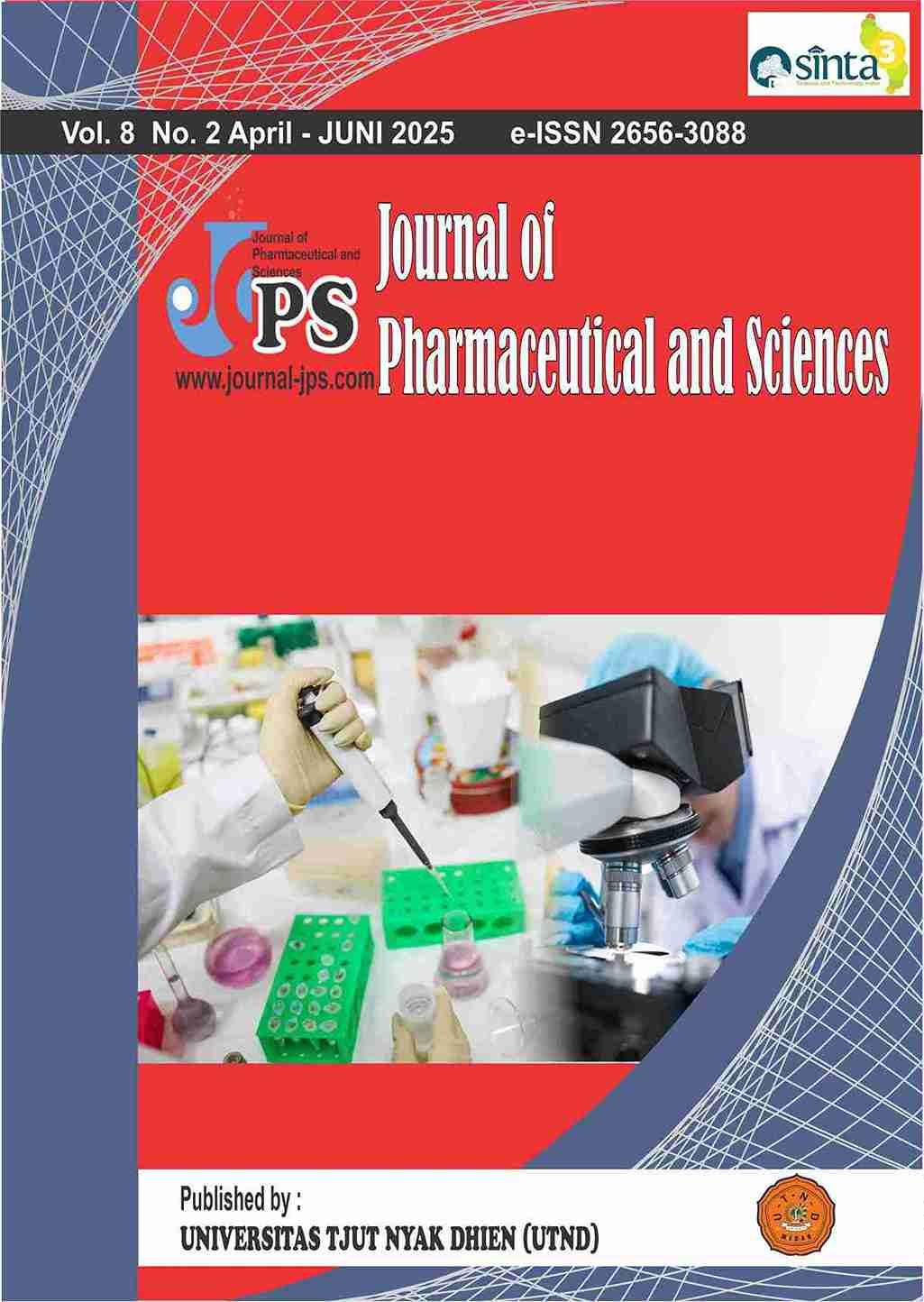Ethnopharmaceutical Study of Medicinal Plants in the Geothermal Area of Ie Seum, Aceh Besar: Exploring Traditional Knowledge and Pharmacological Potential.
Main Article Content
Page: 1160-1166
Abstract
Indonesia is recognised as one of the world's megadiverse countries, possessing extraordinary biological wealth, including the medicinal plant potential in the geothermal area of Ie Seum, Ie Seum Village, Mesjid Raya Subdistrict, Aceh Besar District. This study aimed to explore and document local communities' traditional knowledge regarding using medicinal plants through an ethnopharmaceutical approach. A descriptive qualitative method was employed, with data collected via semi-structured interviews and participatory observation involving purposively selected informants. The findings identified nine medicinal plant species, with Eupatorium inulifolium and Vitex pinnata demonstrating the highest use value (UV) scores of 0.750 and 0.438, respectively, indicating their dominant usage in traditional healing practices. Leaves were the most frequently utilised plant parts, with standard preparation methods including boiling and pounding. These plants have traditionally been used to treat various health conditions, including fever, wounds, skin infections, and digestive disorders. The findings highlight the richness of traditional knowledge in Ie Seum and its potential as a foundation for developing natural product-based medicines. The extreme environmental conditions of the geothermal area are believed to influence the bioactive metabolite composition of the plants, potentially enhancing their pharmacological properties. This study underscores the importance of preserving local knowledge and encourages further scientific exploration to support the sustainable use of medicinal plants in developing traditional medicines.
Downloads
Article Details

This work is licensed under a Creative Commons Attribution-NonCommercial-ShareAlike 4.0 International License.
References
Cahyaningsih R, Magos Brehm J, Maxted N. Gap analysis of Indonesian priority medicinal plant species as part of their conservation planning. Glob Ecol Conserv 2021;26:e01459. https://doi.org/10.1016/j.gecco.2021.e01459. DOI: https://doi.org/10.1016/j.gecco.2021.e01459
Fakri F, Harahap SP, Muhni A, Khairan K, Hewindati YT, Idroes GM. Antimicrobial Properties of Medicinal Plants in the Lower Area of Ie Seu-um Geothermal Outflow, Indonesia. Malacca Pharm 2023;1:55–61. https://doi.org/10.60084/mp.v1i2.44. DOI: https://doi.org/10.60084/mp.v1i2.44
Idroes R, Fakri F, Khairan K, Zulfendi. Skrining Aktivitas Tumbuhan yang Berpotensi Sebagai Bahan Antimikroba di Kawasan Ie Seu-um (Outflow Geothermal Zone) Aceh Besar. Banda Aceh: Syiah Kuala University Press; 2016.
Climo M, Stott M. Some like it hot: Life in New Zealand’s geothermal environments. New Zealand: GNS Science; 2015.
Singh B. Ethnopharmacological Properties, Biological Activity and Phytochemical Attributes of Medicinal Plants, Volume 1. Boca Raton: CRC Press; 2023. https://doi.org/10.1201/9781003399674. DOI: https://doi.org/10.1201/9781003399674
Pant P, Pandey S, Dall’Acqua S. The Influence of Environmental Conditions on Secondary Metabolites in Medicinal Plants: A Literature Review. Chem Biodivers 2021;18. https://doi.org/10.1002/cbdv.202100345. DOI: https://doi.org/10.1002/cbdv.202100345
Idroes R, Fakri F, Khairan K. Skrining Aktivitas Tumbuhan yang Berpotensi sebagai Bahan Antimikroba di Kawasan Ie Jue (Upflow Geothermal Zone) Aceh Besar. Banda Aceh: Syiah Kuala University Press; 2017.
Davis CC, Choisy P. Medicinal plants meet modern biodiversity science. Curr Biol 2024;34:R158 73. https://doi.org/10.1016/j.cub.2023.12.038. DOI: https://doi.org/10.1016/j.cub.2023.12.038
Hussain M, Alam J, Gul A, Majid A, Shah GM, Shafqat N, et al. Assessment of traditional knowledge of medicinal plants practised by rural communities around Musk Deer National Park, Kashmir Himalaya, Pakistan. Ethnobot Res Appl 2024;28. https://doi.org/10.32859/era.28.6.1-23. DOI: https://doi.org/10.32859/era.28.6.1-23
Sharma A, Manpoong C, Pandey H, Gupta CK, Baja Y, Singh MS, et al. A Comprehensive Update on Traditional Agricultural Knowledge of Farmers in India, 2023, p. 331–86. https://doi.org/10.1007/978-981-19-6502-9_14. DOI: https://doi.org/10.1007/978-981-19-6502-9_14
Dar RA, Shahnawaz M, Ahanger MA, Majid I ul. Exploring the Diverse Bioactive Compounds from Medicinal Plants: A Review. J Phytopharm 2023;12:189 95. https://doi.org/10.31254/phyto.2023.12307. DOI: https://doi.org/10.31254/phyto.2023.12307
Salamatin AA, Khaziev RS, Makarova AS, Ivanova SA. Kinetics of bioactive compounds extraction from plant material using boiling solvent. Theor Found Chem Eng 2015;49:200 6. https://doi.org/10.1134/S0040579515020116. DOI: https://doi.org/10.1134/S0040579515020116
Antonio CNS, Selene M de M, Elnatan B de S, Raquel O dos SF. The genus Eupatorium L. (Asteraceae): A review of their antimicrobial activity. J Med Plants Res 2017;11:43 57. https://doi.org/10.5897/jmpr2016.6313. DOI: https://doi.org/10.5897/JMPR2016.6313
Islam Z, Caldeira GI, Caniça M, Islam N, Silva O. Vitex Genus as a Source of Antimicrobial Agents. Plants 2024;13:401. https://doi.org/10.3390/plants13030401. DOI: https://doi.org/10.3390/plants13030401
Shafie NA, Suhaili NA, Taha H, Ahmad N. Evaluation of antioxidant, antibacterial and wound healing activities of Vitex pinnata. F1000Research 2020;9:187. https://doi.org/10.12688/f1000research.21310.2. DOI: https://doi.org/10.12688/f1000research.21310.1





